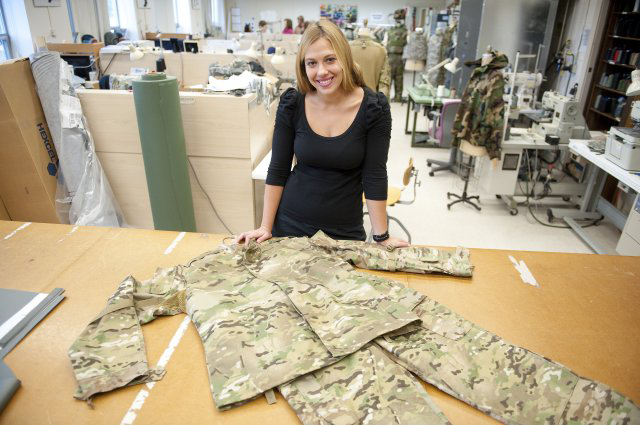Some of the most important realities in 3D printing consider 3D printed clothes to be among their proudest achievements. Both Ultimaker and Materialise have a 3D printed dresses in their lobby, while Stratasys has invested a lot in 3D printed fashion marketing-related activities, especially when launching the latest Connex3. The first field where 3D printed clothing may go from a fascinating experiment to real applications, though, may be the military.
We are not only talking about custom-made body armor (although that is certainly one direction for 3D printing adoption in the military) but about actual military garments. Through 3D printing, the US Army might be able to combine different advanced materials, reduce the number of seams for added comfort and durability, and even create embedded ballistic sections into a single piece of clothing.
“It could improve flexibility,” says Annette LaFleur, Design, Pattern and Prototype team leader at the US Army Natick Soldier Research Development and Engineering Center (NSDEC). Her group develops a wide range of soldier garments: field clothing, combat clothing, dress clothing, chem-bio protection, body-armor systems, gloves, hats, helmet covers and experimental garments, using new textiles.
“You could incorporate hard and soft materials together into one design. So, maybe you have some sort of clothing or protective item that has rigid areas that move into soft areas, where your body needs to flex. That could be really exciting because that is hard to accomplish with a regular textile.”
The transition may be smoother than with regular consumer clothing as most of the items are already developed using CAD software. LaFleur and her nine member team study each item and develop prototypes to figure out the best possible way to fit every necessary part of standard issue and mission-specific uniforms. With 3D printing, these will continue to be increasingly made up of more and more synthetic tecno-fibers.
“We could create something that is a totally perfect fit and reduce weight, maybe reduce bulk. A lot of the neat textiles that are being 3D printed, even out of these synthetics, have a 3D structure to them,” she said. “That makes you think about spacer-type materials where you have air flow, which is so important if our Soldiers are going to be somewhere hot again, whether it is jungle or desert.”
The NSRDEC already has an extensive archive of CAD models for fielded, historical and experimental clothing items. LaFelur’s team can use the models that soldiers have shown to appreciate and use it as a base to create a new garment. To do that, they can use over 300 digital tools to alter the patterns, already present in the CAD systems.
“We use the system to size out all the patterns to the different sizes and lengths that are needed,” she said. “We work really closely with the anthropometric group here to help determine what sizes are needed for different items.” Although 3D printing will make future garments better and less costly to manufacture, the human design work will continue to make the difference, on and off the battlefield.



